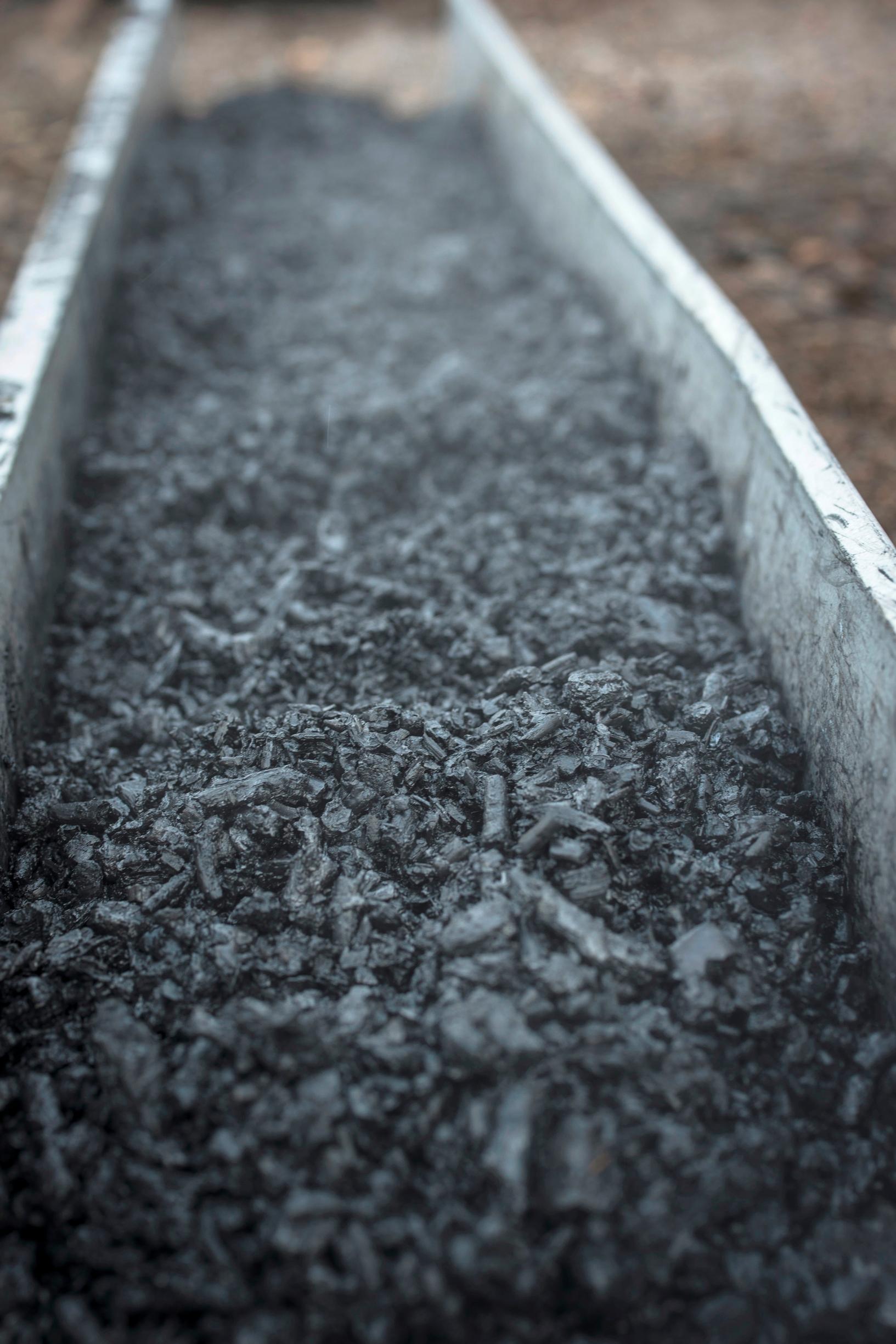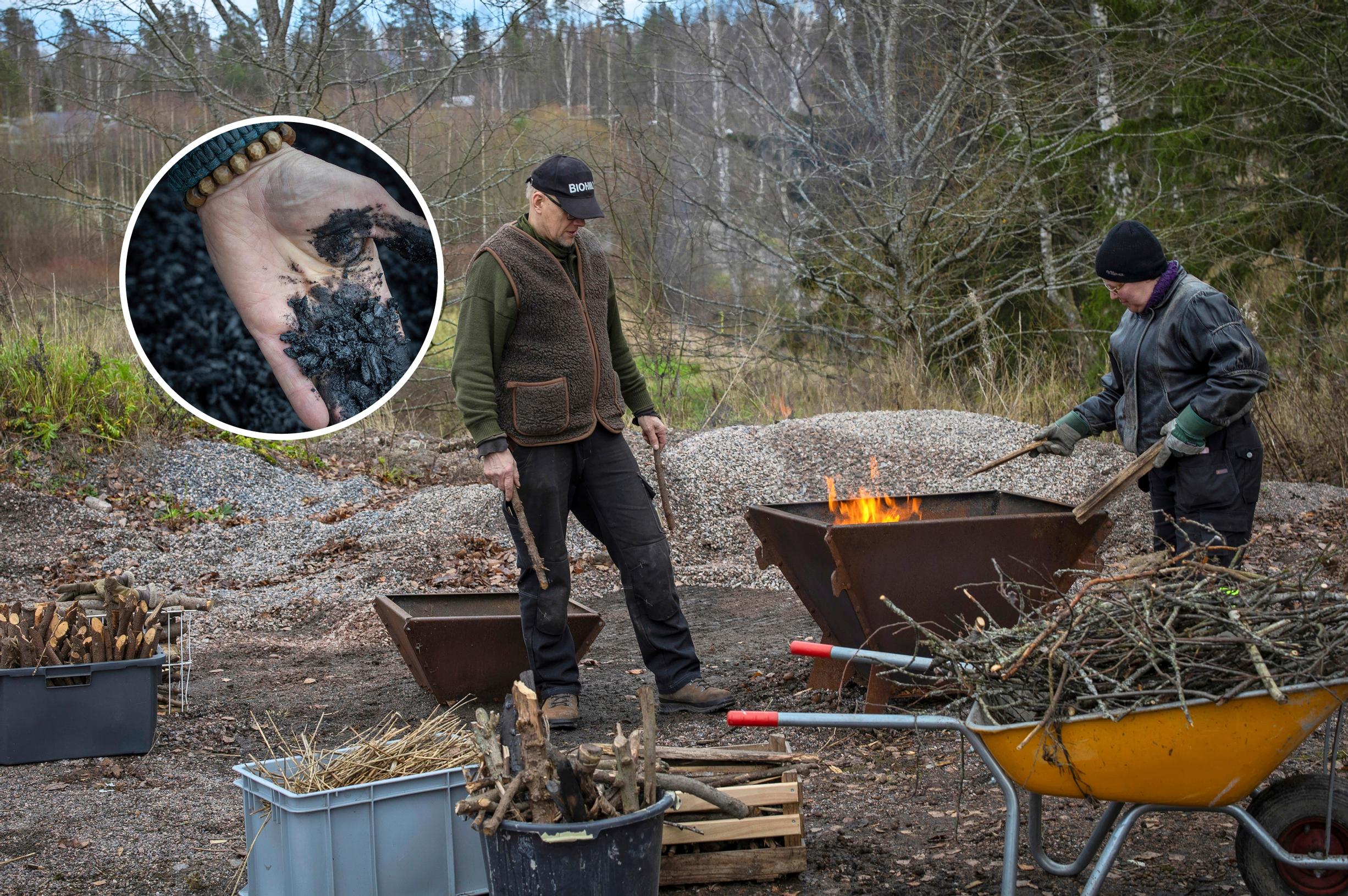
Biochar is the miracle product coveted by gardening enthusiasts—how to make it yourself
At Kerava Manor in Finland, Pekka Koivukunnas and Marju Kortemäki produce biochar that helps the soil retain moisture and nutrients while boosting carbon sequestration. Branches, twigs, and other garden waste can all be used, as long as they’re dry and clean.
The flames eagerly lap up the twigs and sticks that Pekka Koivukunnas keeps adding to the small fire he started at the bottom of a steel cone kiln.
“You need to arrange the wood haphazardly, like a magpie’s nest, so it burns properly. We want to burn in layers so a bed of embers remains at the bottom without oxygen. That way, biochar forms instead of the wood turning to ash,” he explains.
Today he’s making biochar with Marju Kortemäki at Kerava Manor, home to the Finnish sustainable development community Jalotus ry. Marju, who works there as a supervisor, says they use biochar in the dozens of raised beds in the communal garden and as a dry agent in outhouses and compost.
“You can really see the impact. Most of our raised beds have solid bottoms, so the soil dries out very quickly. When we added biochar to the soil two years ago, we noticed we didn’t have to water as often. It also speeds up composting and makes outhouse waste odorless.”

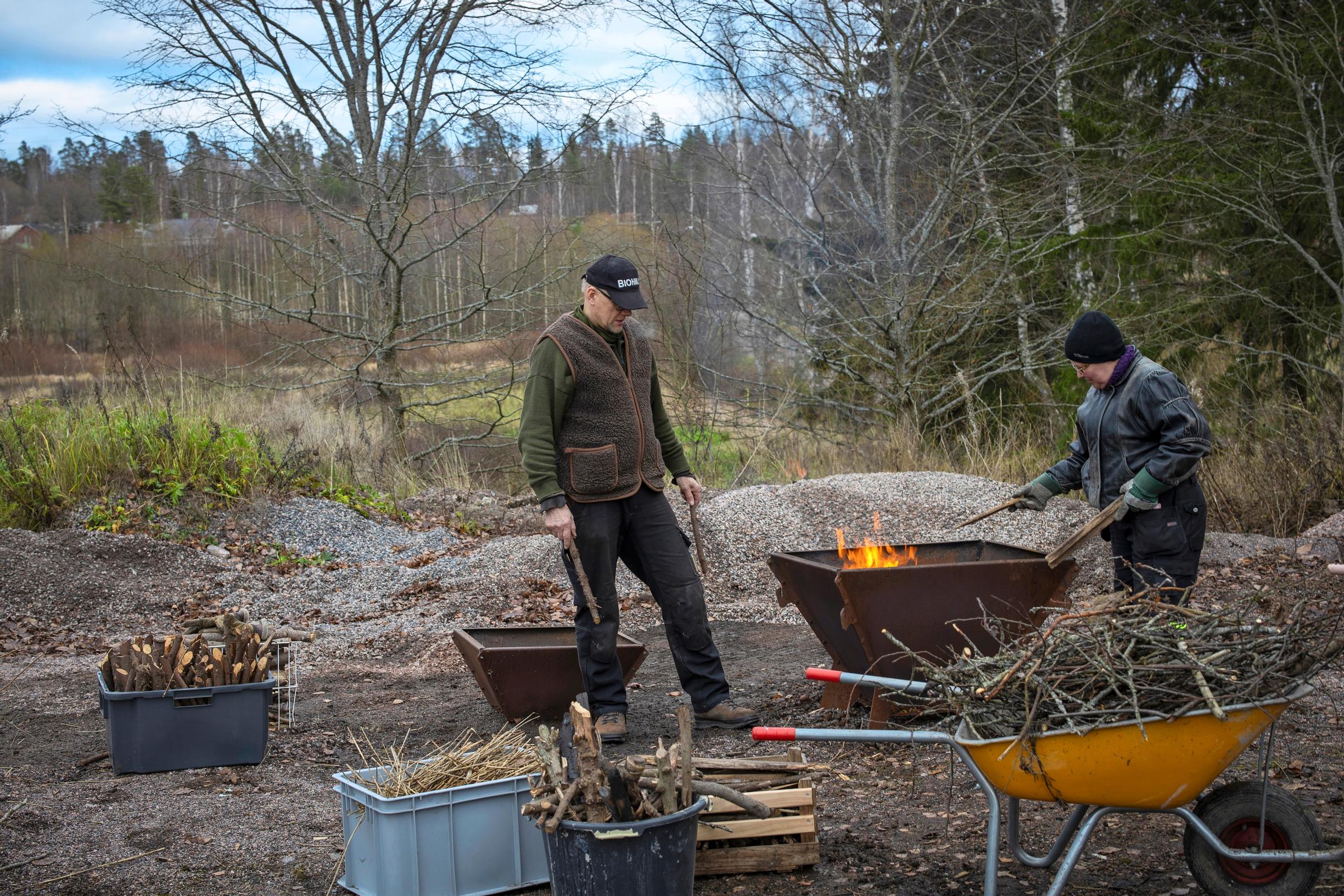

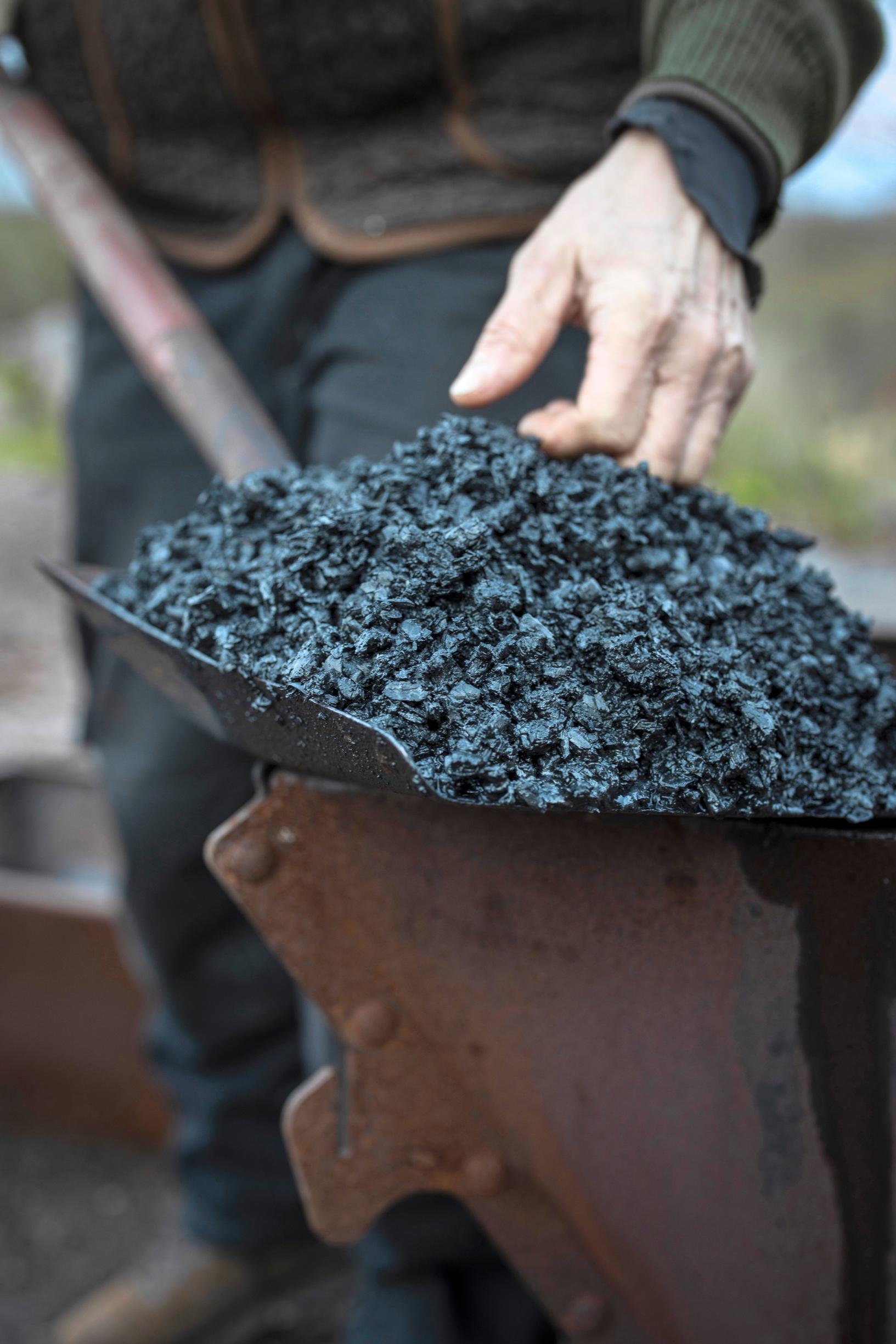
I wanted to do something concrete to fight climate change and realized that making biochar is a fantastic way to sequester carbon.Pekka
Pekka has noticed that many only believe in biochar’s power once they see it themselves. He recalls a friend with a dry cottage lot that would practically burn to a crisp every summer. She was puzzled why a few spots remained lush and green, then realized she’d worked a bag of purchased biochar into those areas years earlier. Now she makes her own biochar at the cottage with a small cone kiln.
Biochar has quickly become the miracle product every gardening enthusiast wants. Pekka first heard about it more than fifteen years ago. At first it seemed far-fetched, but the more he read about biochar and its production, the more enthusiastic he became.
“I wanted to do something concrete to fight climate change and realized that making biochar is a fantastic way to sequester carbon. That’s what matters most to me.”
Biochar is getting a lot of buzz at the moment, but using charcoal to aid cultivation is nothing new. Amazonian terra preta is an exceptionally fertile black soil created in the rainforest by Indigenous peoples centuries ago—it contains large amounts of charcoal. Although the peoples who once farmed there have long since vanished, terra preta continues to grow thicker every year because the charcoal retains nutrients and moisture while boosting microbial activity in the soil. Pekka has also learned that biochar has traditionally been used in Africa to enrich the earth.
“I was once showing how to make biochar at an event when a young man watched me closely. Eventually, he came over and asked if this was what his grandmother in Congo does in her garden before planting. She simply made her biochar in a shallow pit.”
Making biochar is comparable to building an open fire, so first check that there’s no forest fire warning in effect.
Pekka and Marju aim for flames across the entire kiln surface. They regularly feed the fire with cut pieces of wood, twigs, reeds, and other dry plant material. Any clean and at least superficially dry wood or dried plant waste—like lupine roots, weeds, or dredged reeds—works.
When the flames begin to turn into embers, Marju runs to get water. They’ll need it soon to extinguish the embers at exactly the right moment—before everything turns to ash. Thick clouds of steam billow upward as Pekka pours in three buckets of water and stirs with a shovel. The embers hiss and crackle, absorbing moisture. He picks up a large chunk of still-steaming biochar and rubs it lightly.
“See how easily it crumbles? The smaller these pieces break apart, the better the quality. These little fragments have countless surfaces for moisture and nutrients to cling to.”
Biochar production—how to make your own biochar
1. It’s easiest to do pyrolysis in a cone kiln, which naturally creates an oxygen-deprived zone at the bottom. You can also make biochar in any non-flammable container or even a pit.

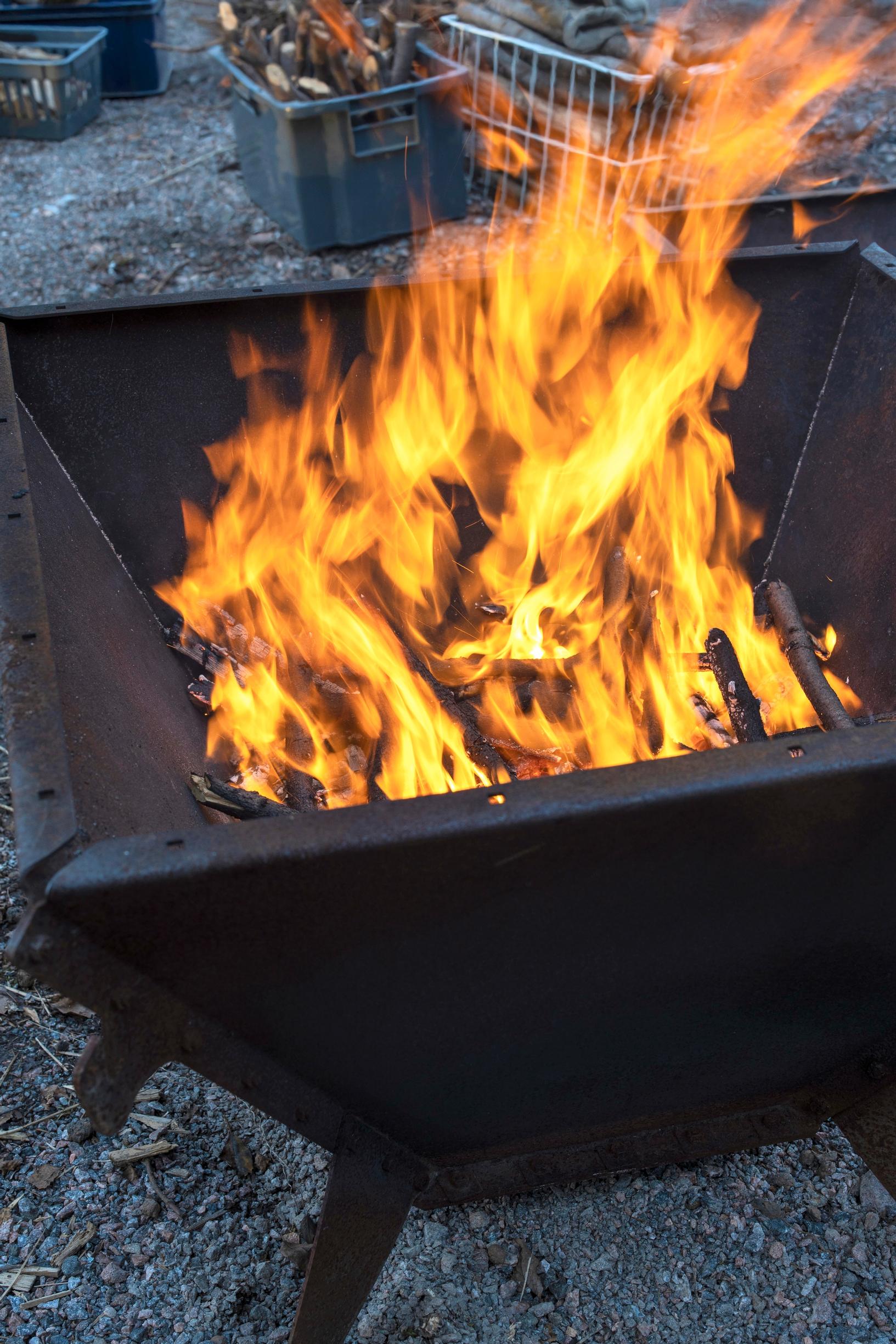
2. Use only untreated, dry wood and dried plant waste.

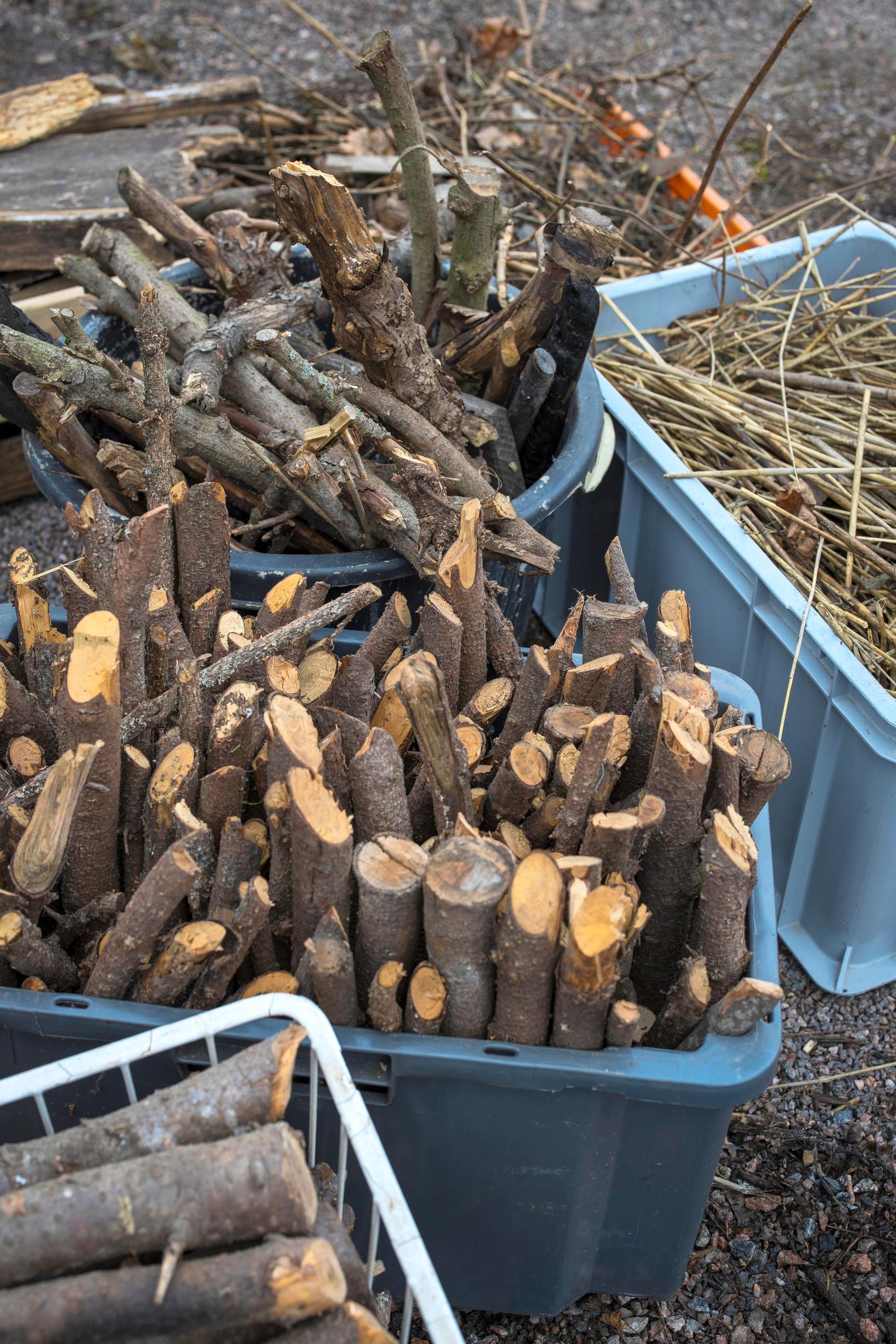
3. Light the fire and keep adding material to the flames. Make sure the burning is as clean as possible. The idea is for a bed of embers at the bottom to become biochar.

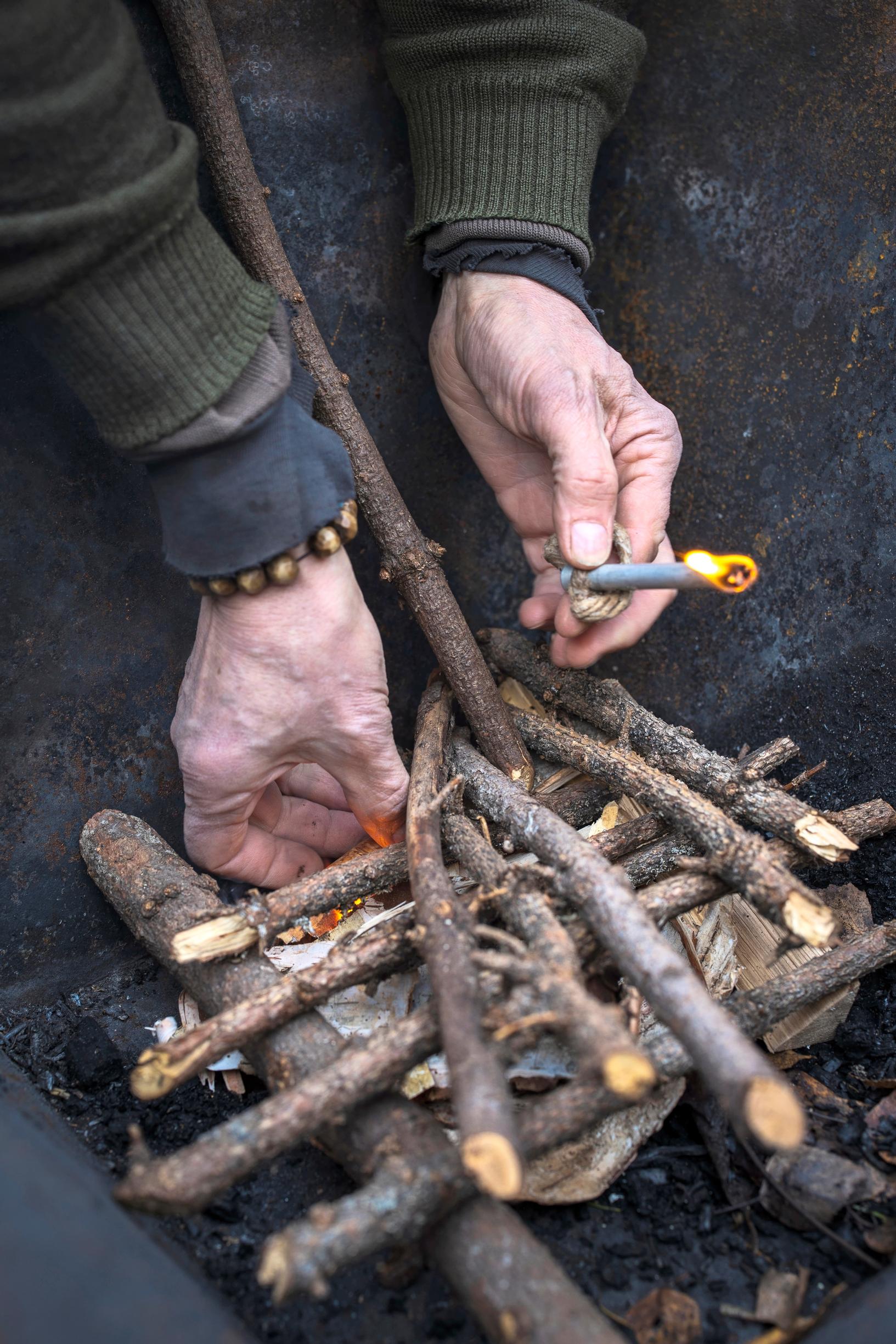
4. When the container is nearly full, douse the fire with plenty of water. Turn the embers with a shovel and check there are no hot spots.

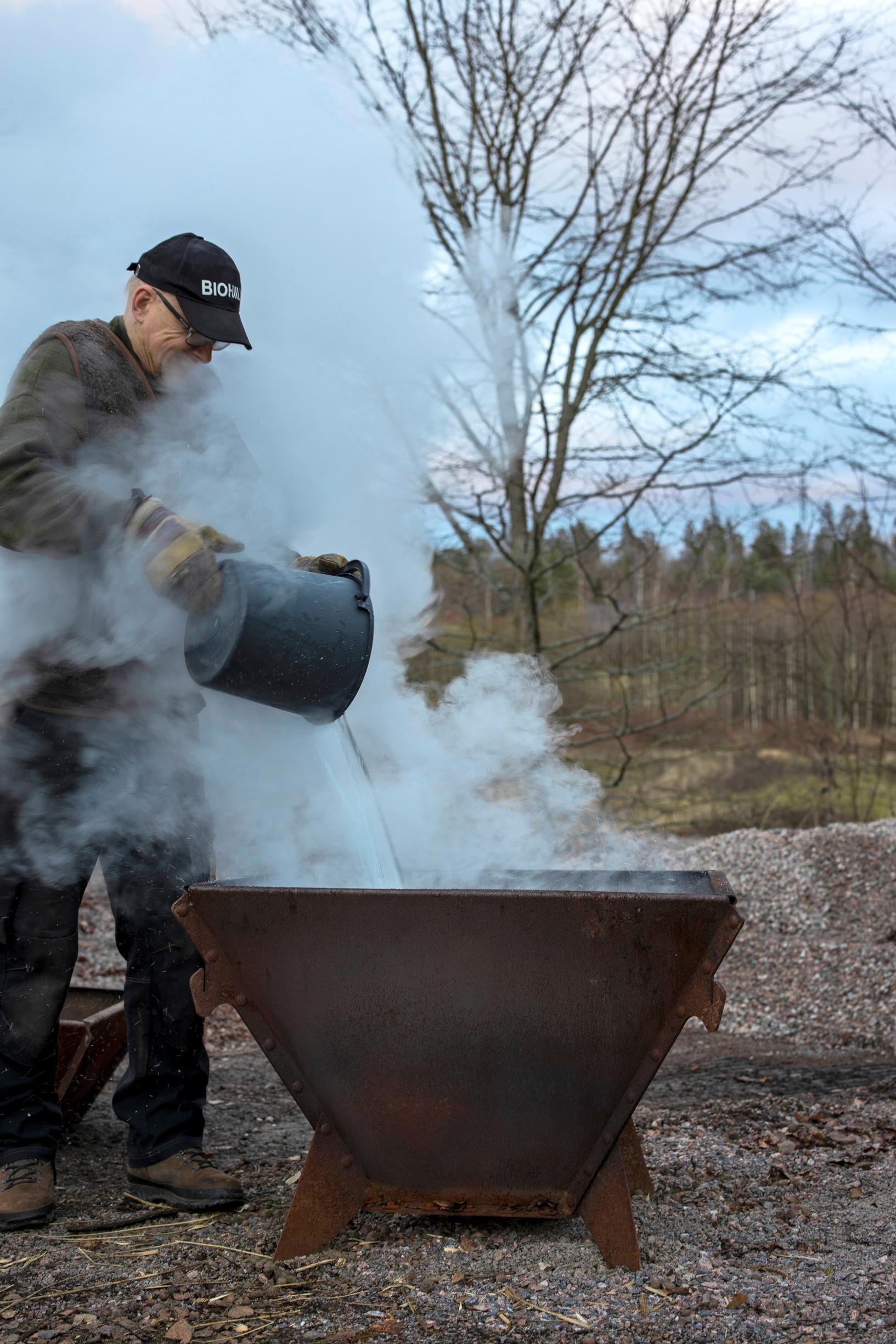
5. The right extinguishing moment takes practice. Too early, and some of the material won’t become biochar. Too late, and much of it will turn to ash.

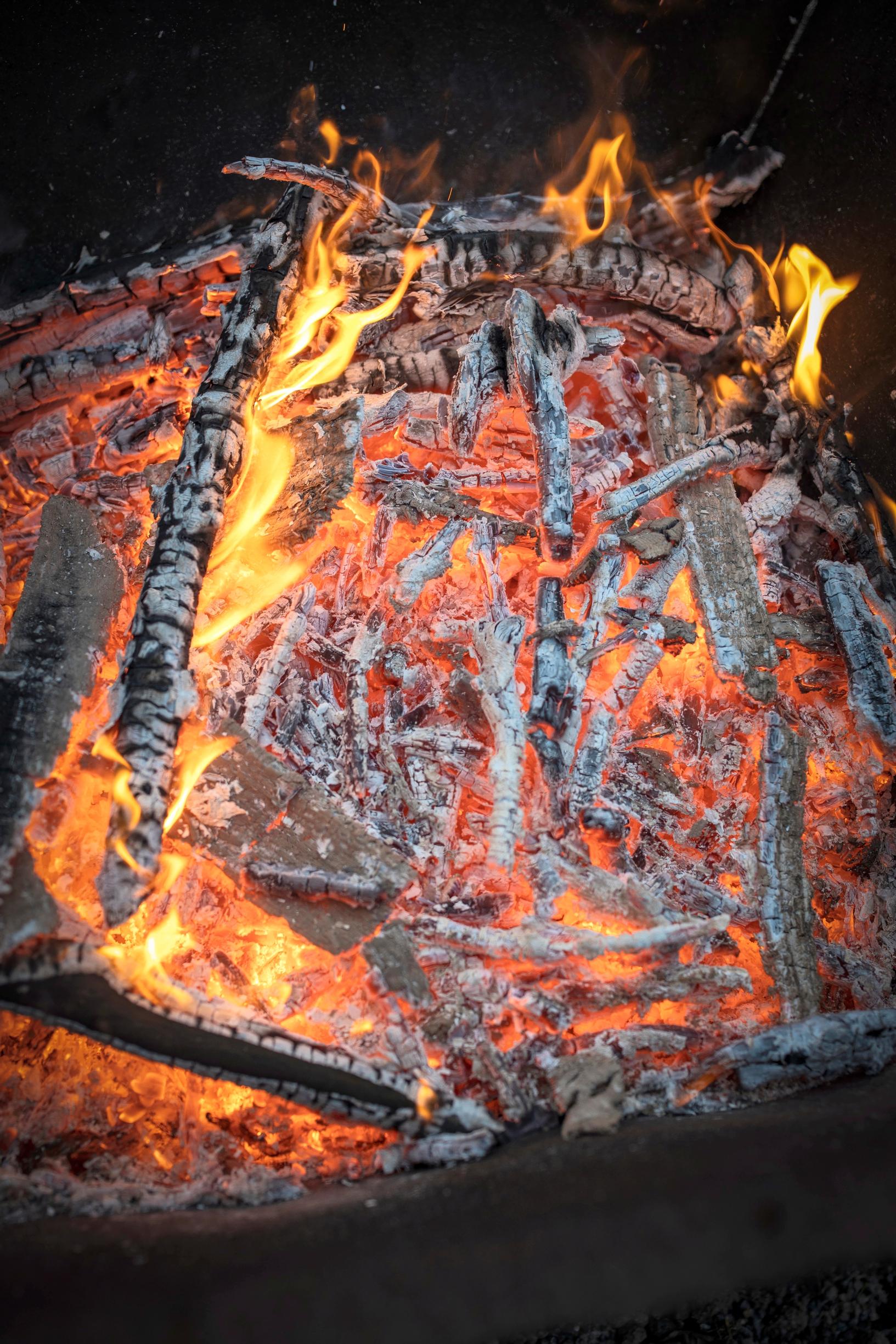
6. Let the biochar cool, then break it up by hand or with a shovel into roughly 10-millimeter (0.4-inch) pieces.

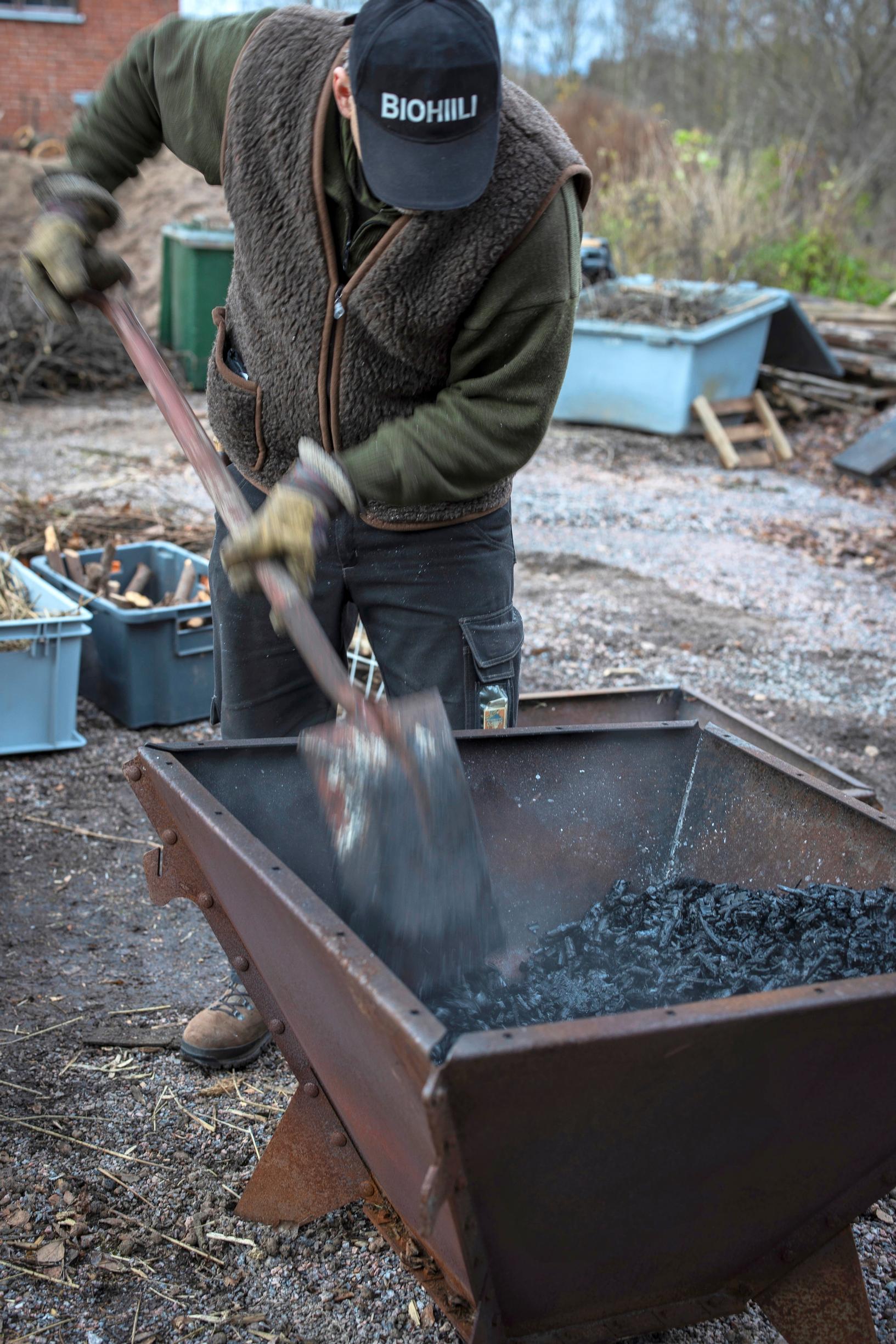
7. Before mixing into the soil, load the biochar with nutrients. The easiest way is to use it as a dry component in compost. You can also soak it for a few days in something like urine or a nettle solution. Then it’s ready to go into your soil.

